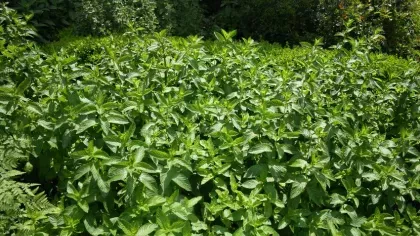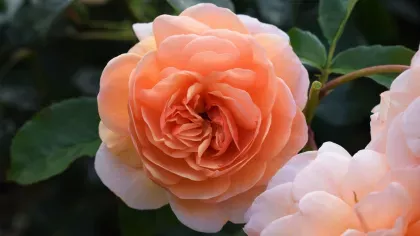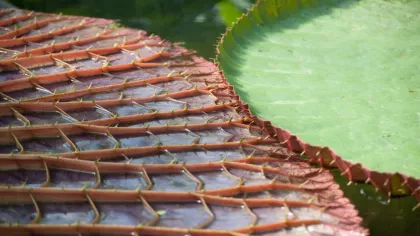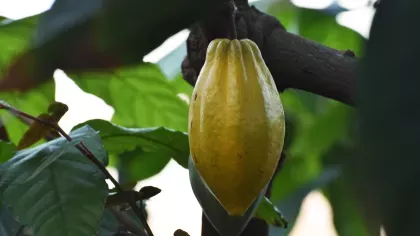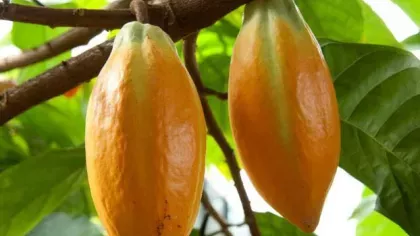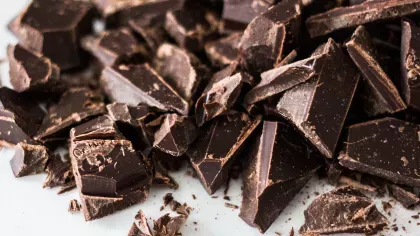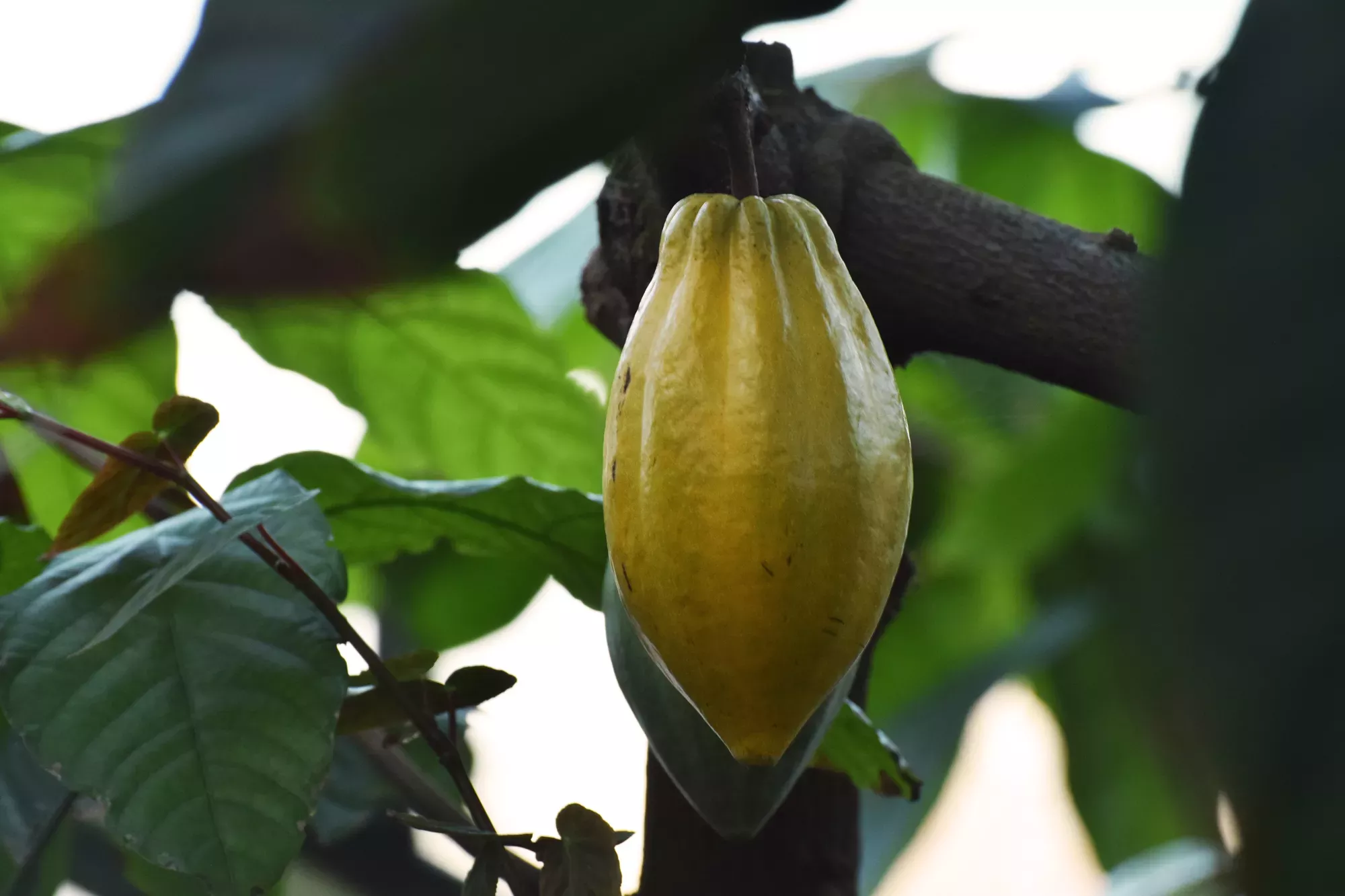
Cacao tree
On this page
One of the world’s most popular products, chocolate, comes from the cacao tree.
It is made from cacao beans: The seeds stored in the yellow fruit of the cacao tree.
Cacao beans have been eaten by humans for thousands of years. The Mayans and Aztecs mixed ground cacao beans with chilli to make a bitter and spicy drink.
Cacao beans were so highly valued by the Aztecs that they were used as currency.
Plant description
An evergreen tree with shiny, leathery, egg-shaped leaves that start red and turn green. The young leaves are red and droop to deter herbivores. It is cauliflorous, meaning the tiny, yellowish-white to pale pink flowers grow in clusters directly from the trunk and large branches. The oval fruit are yellow to orange when ripe. The seeds inside the fruit are tightly packed together and surrounded by a white pulp.
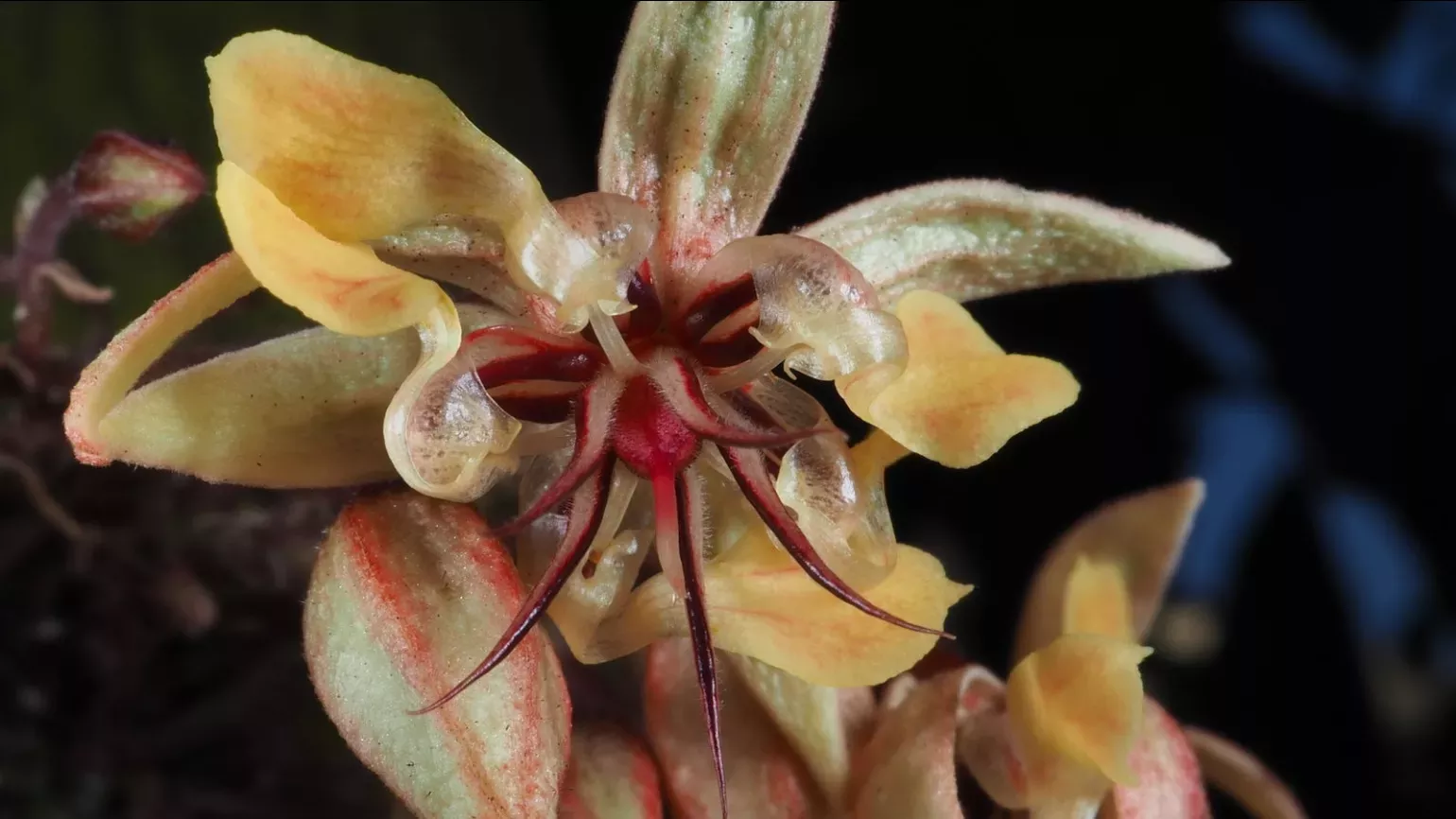
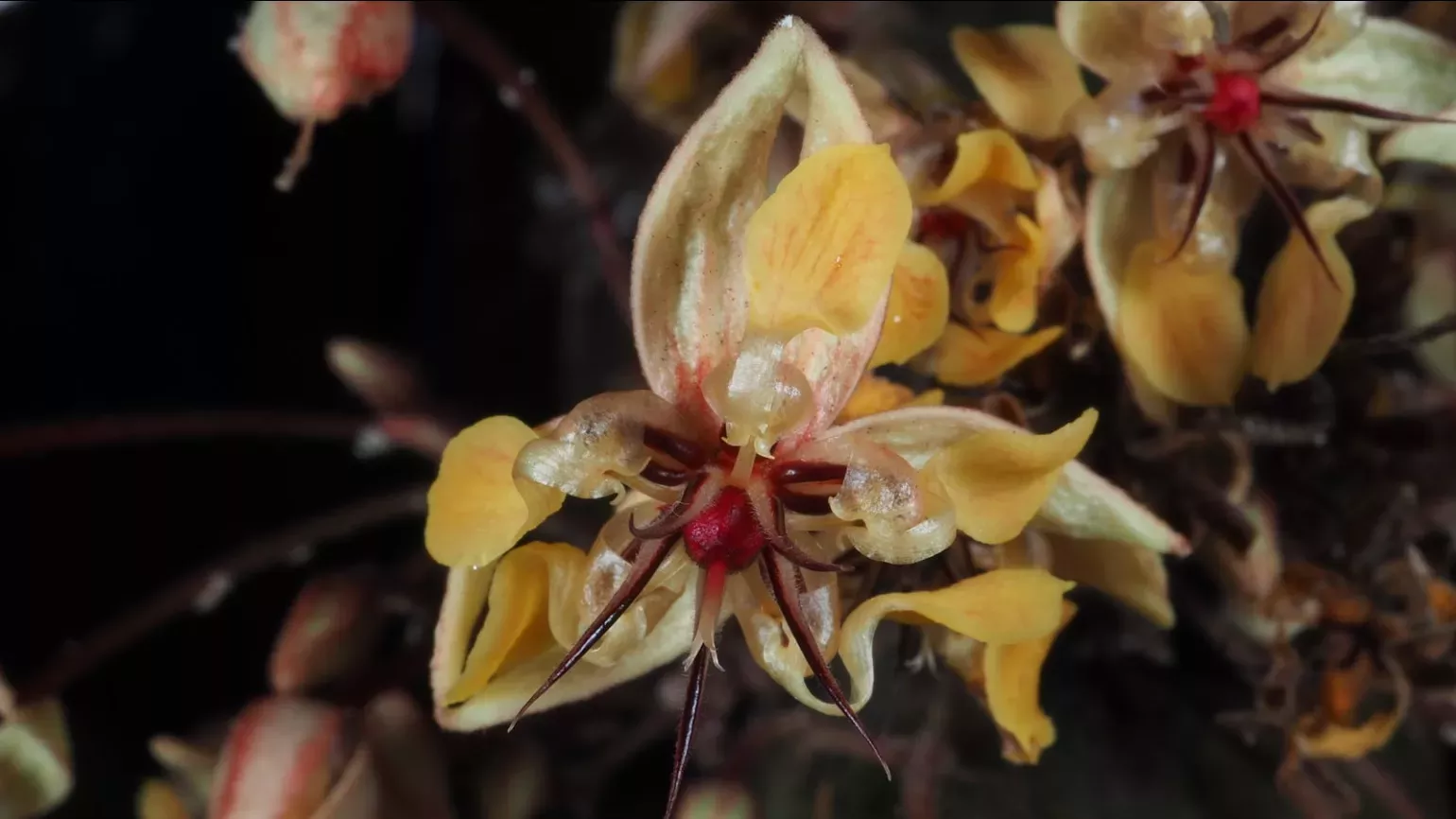
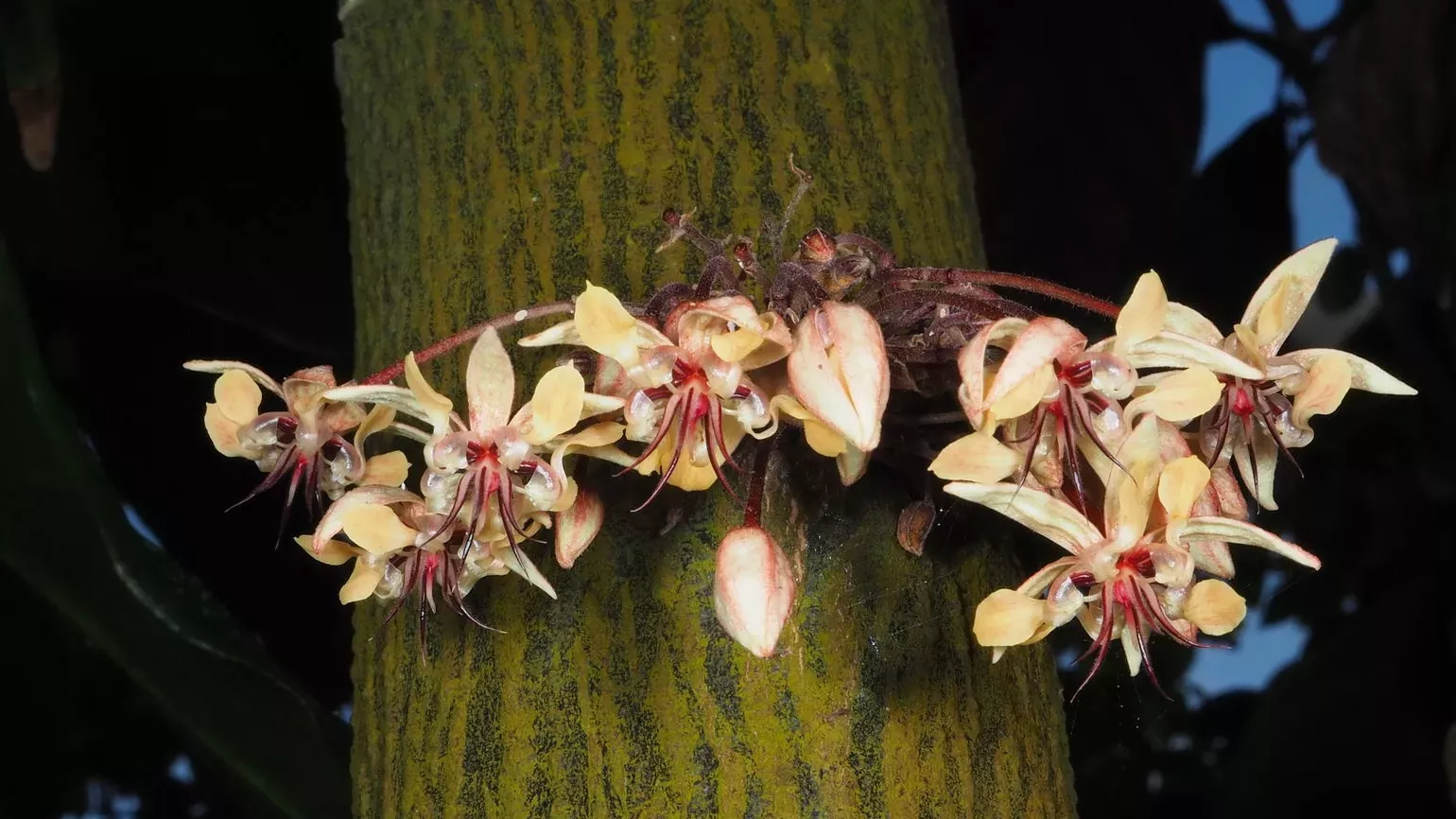
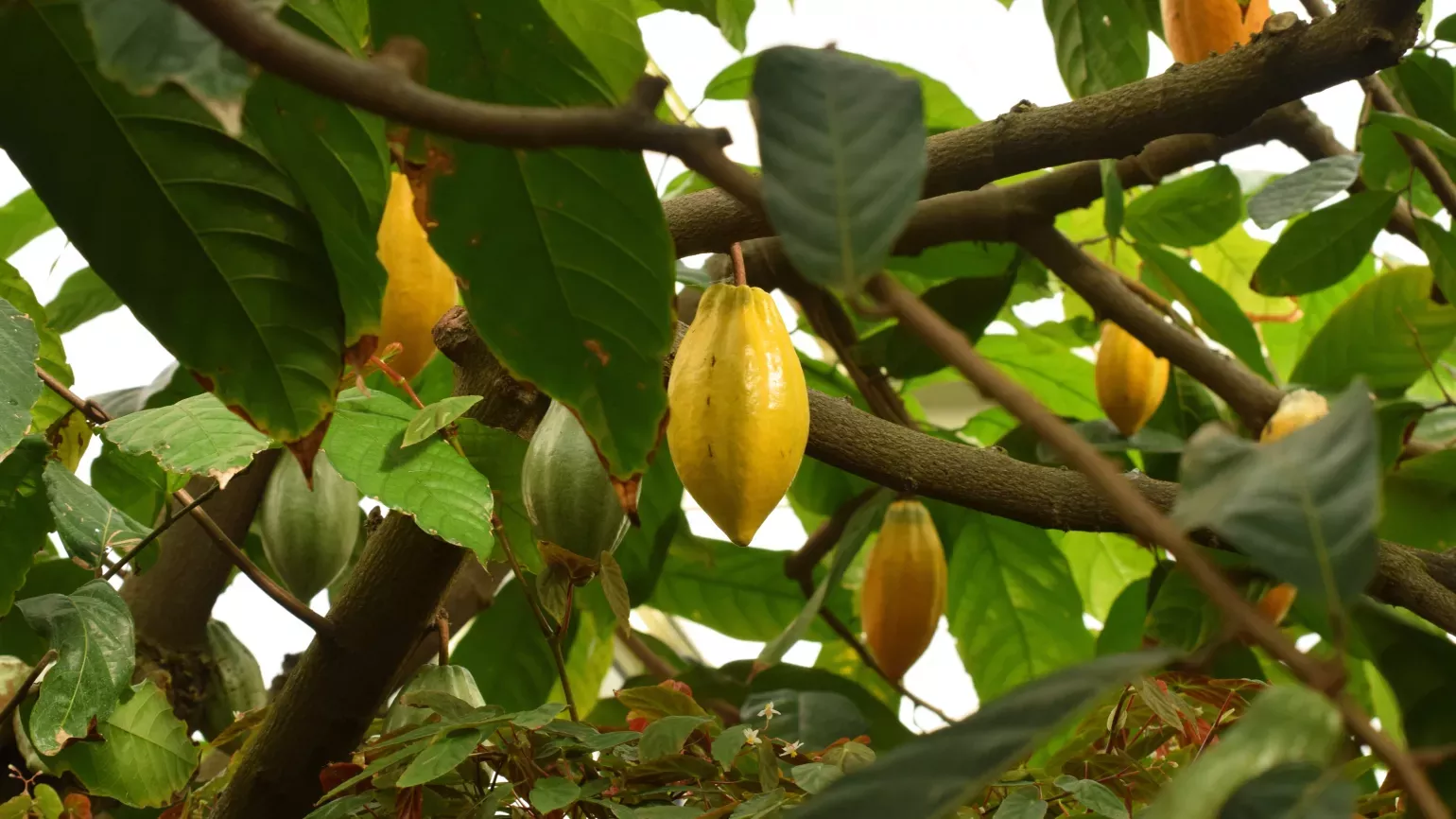


Plant uses
Beauty and cosmetics
Cacao butter, a product from cacao beans, is sometimes added to lip salves and face creams as it nourishes dry skin and lips.
Cultural
Chocolate has long been considered a romantic gift. Historically, the Mayans and Aztecs used chocolate in engagement and marriage ceremonies and religious rituals.
Food and drink
Cacao beans are used to make cacao solid, cacao butter, and chocolate. They were first consumed in Central and South America as a liquid treat mixed with spices like chilli and vanilla.
The flesh of cacao fruit has a tropical taste like passion fruit and mango. It is used in some countries as an ingredient in juices, smoothies, jellies, jams, and ice creams.
Health
Cacao beans are rich in antioxidants which help protect cells from damage.
They are also known to increase endorphins, a hormone which boosts happiness.
Did you know?
To make chocolate, cacao fruits are harvested when they are ripe and opened to remove the beans inside. The beans are fermented, dried, roasted, husked, and then ground up to make a thick paste called chocolate liquor which is the basis of all chocolate products.
Different types of chocolate are made by mixing ingredients like sugar and milk with chocolate liquor.
The Olmecs in Mexico cultivated the cacao tree for its beans as long ago as 400 BCE.
The cacao tree is unusual because it produces flowers directly on its trunk and branches, rather than on new shoots. This flowering method is called cauliflory.
The Latin name Theobroma means 'food of the gods'.
Where in the world?

Evergreen tropical rainforest with high humidity and rainfall. Grows at low elevations in the shade of bigger trees.
Find it in our gardens
Kew Gardens
A botanic garden in southwest London with the world’s most diverse living plant collection.
Location
Palm House and Princess of Wales Conservatory.
View map of Kew GardensBest time to see
Our work
Kew scientists have worked with communities in Bolivia to help grow wild cacao trees.
Growing native trees in damaged areas like abandoned cattle fields will help improve soil fertility so crops can be grown.
This work will hopefully encourage more sustainable soil and forest management in Bolivia and support local livelihoods.
We also grow cacao trees here at Kew. They are native to the tropical rainforests of South America and love high humidity so they thrive in our Palm House and Princess of Wales Conservatory.
Our cacao trees are kept at 22 to 24˚C during the day and 18˚C during the night.
They grow best in a loam-based compost (a mixture of sand, silt, and clay), combined with organic matter such as coir (fibre from the outer husk of a coconut).
The trees and their foliage are kept moist - mulching around the base of the tree helps to retain moisture and prevent weeds – and the trees are fed regularly using a good balanced fertiliser.
Cacao trees are prone to glasshouse pests such as mealy bugs and aphids but can be treated with insecticides.
In the wild their flowers are pollinated by midges, but here at Kew we hand-pollinate them using a paintbrush so that they produce shiny, yellow fruit.
